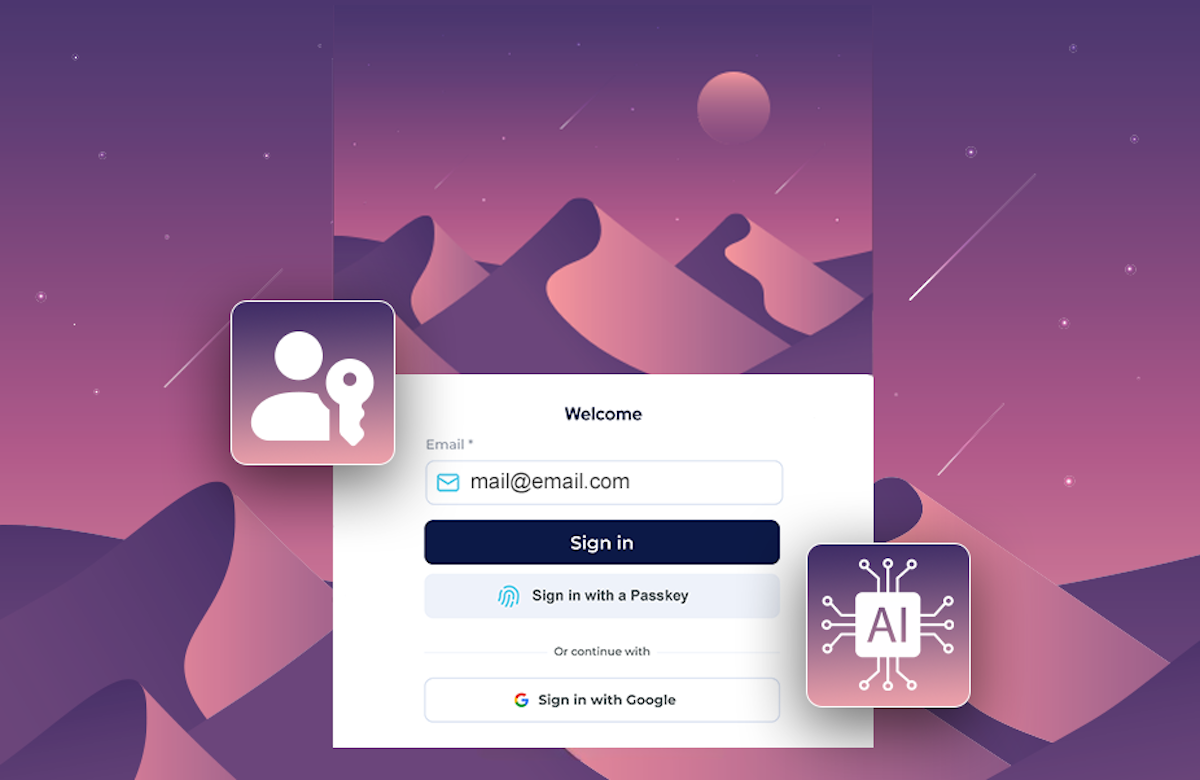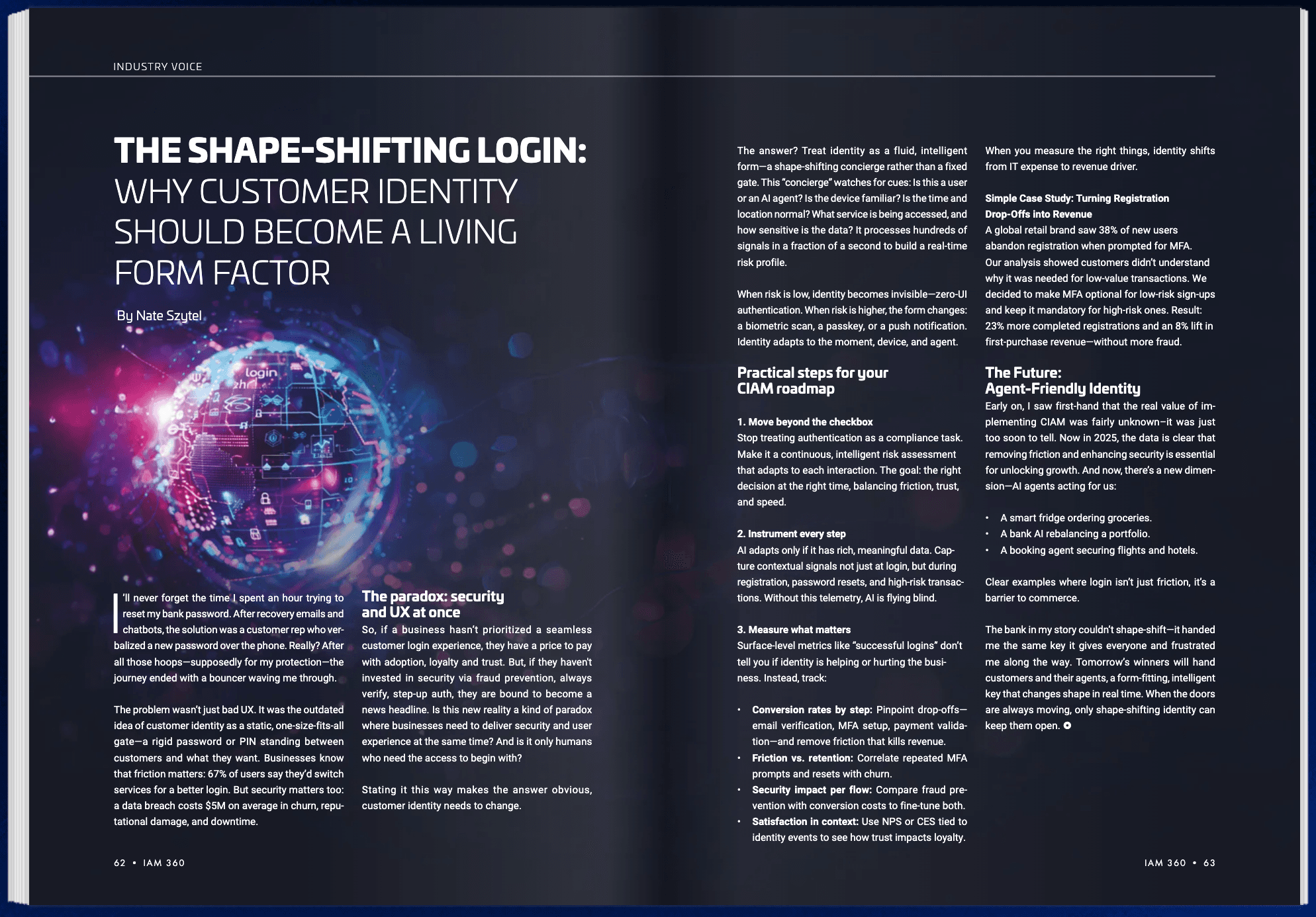Identity isn’t just about access — it’s about experience. As users grow increasingly sensitive to friction and privacy, organizations face a new challenge: how to secure their ecosystems without sacrificing user satisfaction. This echos the ‘personalization’ initiatives which fueled an entire industry channel via CDP (Customer Data Platforms). However, a content personalization strategy and customer identity strategy do not need to be mutually exclusive.
Enter AI-driven CIAM (Customer Identity and Access Management), a transformative force reshaping how businesses approach login, onboarding, consent, and long-term identity management.
First, Why Personalized Journeys Matter
Users expect relevance. They want experiences that are secure and seamless — whether they’re first-time visitors or loyal customers. Generic authentication flows can frustrate, while personalized interactions build trust and loyalty.
That’s where AI comes in.
AI-Driven UX: Tailoring the Identity Journey
Imagine an onboarding flow that changes based on the device, geolocation, past behavior, or even the customer’s likely intent. With AI, this is already happening:
- Smart Onboarding: AI can shorten or extend onboarding steps depending on the user’s familiarity, device risk score, or even past dropout behavior.
- Dynamic Consent: Instead of a one-size-fits-all privacy prompt, AI serves nuanced, real-time consent experiences tailored to region, behavior, or transaction type.
- Contextual Login: A user logging in from their trusted device at a usual time might breeze through. A login from an unknown location or behavior pattern? Trigger adaptive MFA.
This is adaptive identity at scale — and it transforms CIAM from static gatekeeping to intelligent experience curation.
Predictive Identity Linking: Connecting the Dots Across Silos
One of the biggest operational headaches in identity management is duplicate identities. Whether it’s caused by users signing in through different platforms, typos, or evolving credentials, these fractured profiles lead to poor personalization and security gaps.
AI solves this with:
- Entity resolution algorithms that detect and suggest identity matches across systems
- Confidence scoring to flag potential duplicates without triggering false merges
- Behavioral fingerprinting that links seemingly unrelated identities based on device patterns, login rhythms, or purchase behaviors
With AI, organizations can maintain a single source of truth for each customer — critical for compliance, personalization, and analytics.
AI-Generated Policies: Consent and Privacy That Evolve With Users
Static privacy settings don’t reflect how real humans behave. One user might want granular control over cookies today, but opt into a loyalty program tomorrow.
With AI-generated policies, CIAM systems can:
- Recommend consent settings based on behavior, region, and similar cohorts
- Adjust prompts or language depending on user sentiment and engagement level
- Automatically trigger re-consent flows when risk levels or regulations change
This not only improves user trust, but also ensures compliance at scale with GDPR, CCPA, and future data frameworks.
The Future: Frictionless, Trust-Centric Identity
As organizations compete on experience, AI-powered personalization is quickly becoming a core differentiator in CIAM strategy.
Done right, AI enables:
- Lower friction, thanks to intelligent routing and smart MFA
- Higher trust, through adaptive consent and transparency
- Stronger security, by catching fraud patterns humans can’t
Ultimately, the identity journey should feel invisible — and AI is the engine making that possible.
Ready to Make CIAM Smarter?
Companies like Thales, LoginRadius, Auth0, and Ping Identity are investing heavily in AI-powered orchestration, predictive profiling, and dynamic consent tools. If you’re designing the next generation of user experiences, your identity layer needs to be just as intelligent.
Personalization isn’t just for marketing anymore. It starts at login.









